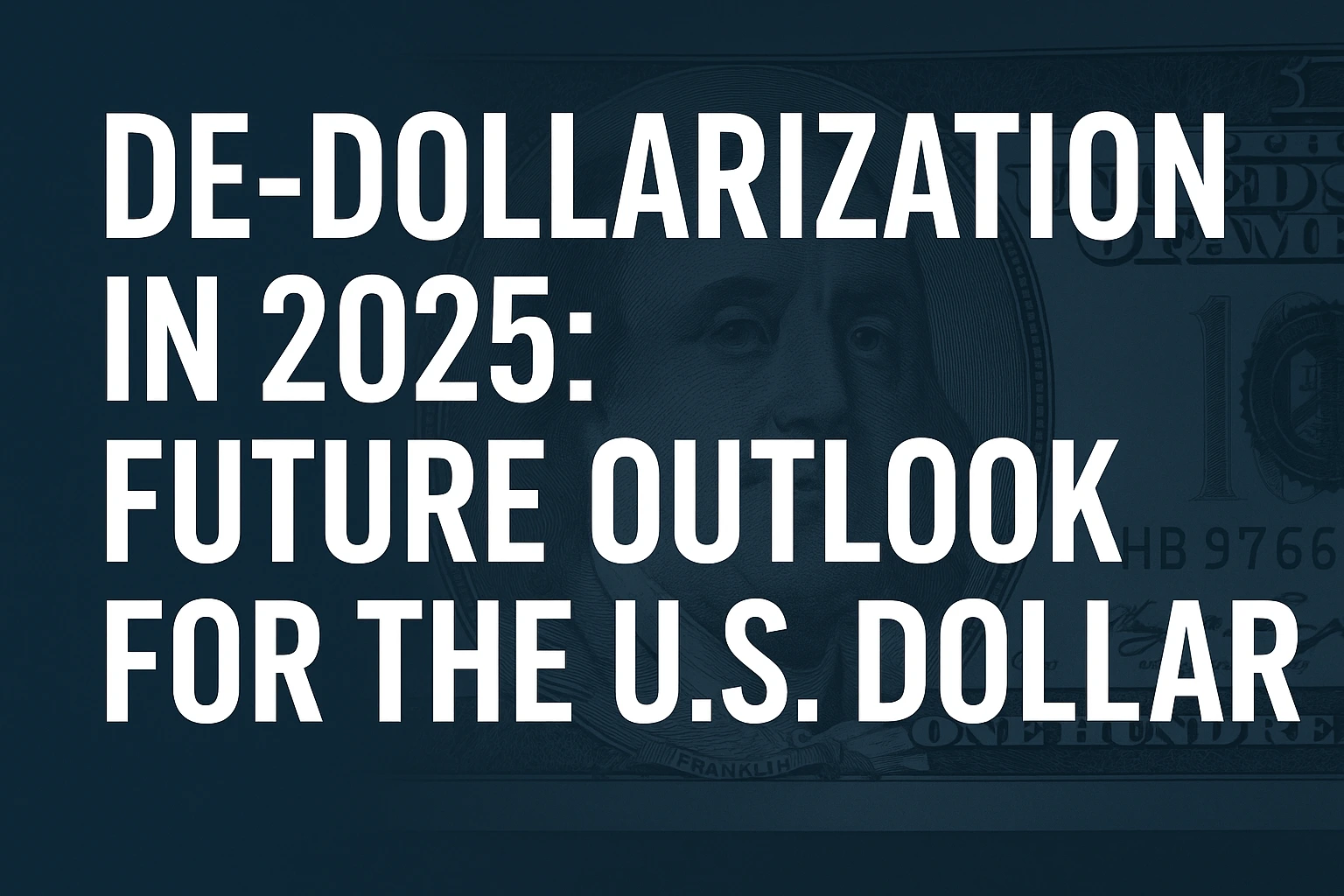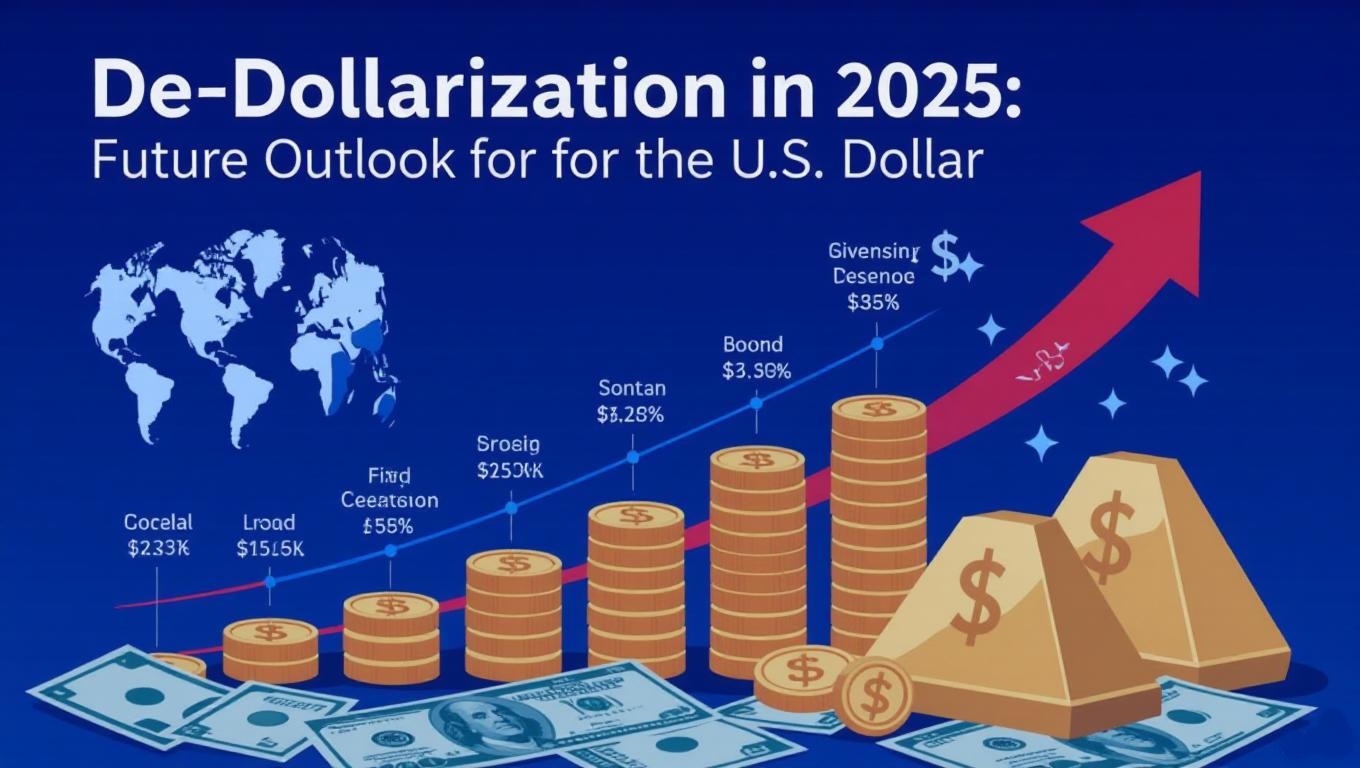The U.S. dollar has long been the world’s primary reserve currency. It is widely used in trade, finance, and international investments. However, in 2025, a significant change is happening. De-dollarization is gaining momentum as nations are decreasing their dependence on the U.S. dollar. This shift is affecting global finance and investor strategies. De-dollarization means reducing reliance on the U.S. dollar in trade, reserves, and financial systems. As a result, countries are exploring alternatives to the dollar, such as gold, euros, yuan, or other currencies. In 2025, the U.S. dollar shows signs of decline. Several factors contribute to its weakening, including: This weakening impacts global trade, investments, and foreign reserves. Several countries are actively moving away from the dollar: These countries aim to reduce exposure to dollar fluctuations and strengthen economic security. A shift from the dollar changes trade patterns. Investors should monitor dollar trends closely, as a weakening dollar affects: Diversification is key. Investors can hedge risks by holding alternative currencies or commodities. The dollar will likely remain important but with reduced dominance. Key trends to watch in 2025 include: Experts predict a gradual decline, not a collapse. The dollar will remain important in the short term, but global reliance is slowly decreasing. While countries move away from the dollar, challenges exist: Despite these challenges, the trend is growing. Countries want to protect themselves from dollar depreciation and economic uncertainty. A: De-dollarization refers to the process by which countries reduce their dependence on the U.S. dollar in international transactions, foreign exchange reserves, and global trade. This shift involves nations increasingly turning to alternative currencies such as the euro, Chinese yuan, or other assets like gold to conduct business and store wealth, rather than relying predominantly on the dollar as the world’s primary reserve currency. A: The dollar is affected by rising inflation, high national debt, changing interest rates, and global economic shifts. A: China, Russia, India, and the European Union are actively reducing dependence on the dollar in trade and reserves. A: Investors may see impacts on stocks, bonds, commodities, and foreign exchange markets. Diversifying assets and holding alternative currencies or commodities can reduce risk. A: No. Experts expect a gradual decline, not a collapse. The dollar will remain important but less dominant in global trade and reserves. The information in this article is for educational and informational purposes only. It does not constitute financial, investment, or professional advice. Individuals should perform their own research or seek advice from a qualified financial advisor before making investment or financial decisions. The author and publisher bear no responsibility for any financial losses or damages resulting from the application of this information. Diversification is key. Investors can hedge risks by holding alternative currencies or commodities.
Table of Contents
What is De-Dollarization?
Reasons for de-dollarization:
Why the U.S. Dollar is Weakening
Countries Leading De-Dollarization
Impact on Global Trade
What It Means for Investors
Future Outlook for the U.S. Dollar
Challenges of De-Dollarization
Frequently Asked Questions (FAQ)
Q1: What is de-dollarization?
Q2: Why is the U.S. dollar weakening in 2025?
Q3: Which countries are leading de-dollarization?
Q4: How does de-dollarization affect investors?
Q5: Will the U.S. dollar collapse?
Disclaimer
For more insights, read our guide on cryptocurrency and blockchain disrupting investment models.

Posted inFinance & investment


